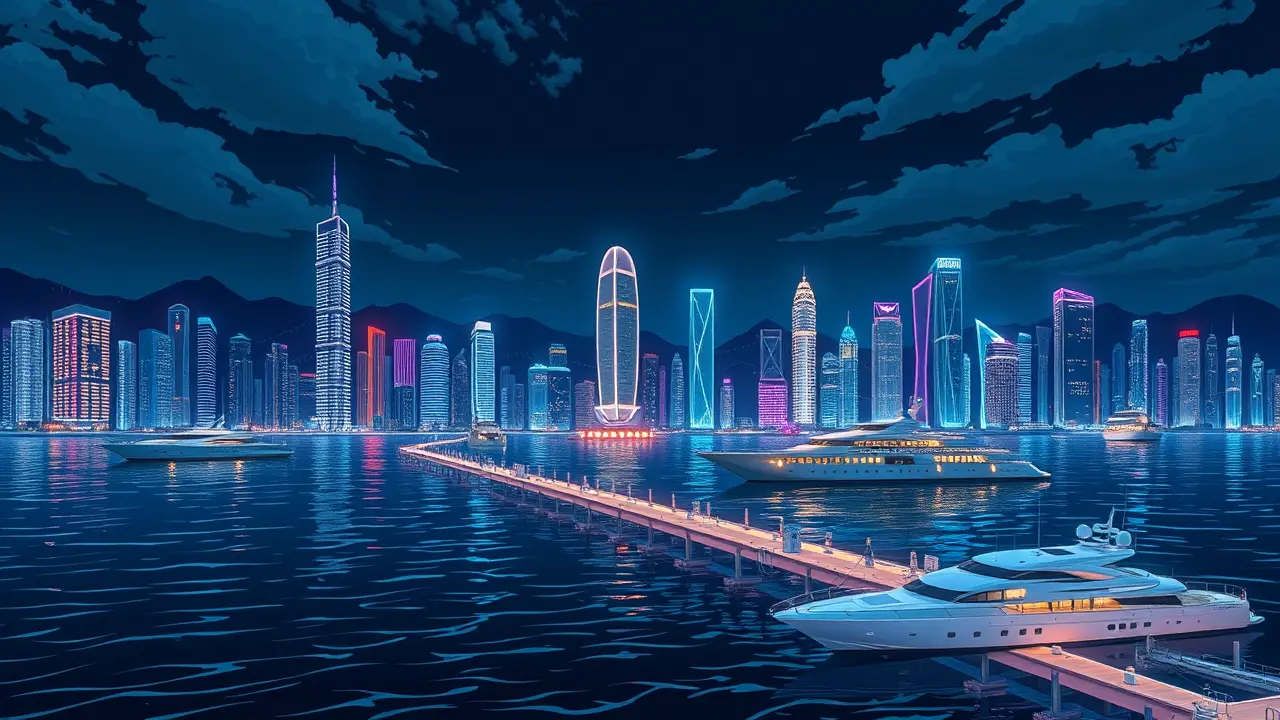
Othertransport & aviationInfrastructure Projects
Hong Kong Plans New Marinas to Boost Yacht Tourism.
ME
Megan Hill
2 days ago7 min read
Hong Kong, that glittering jewel of the South China Sea where skyscrapers pierce the clouds and luxury is a way of life, is setting its sights on a rather glamorous problem: a serious shortage of parking for its floating palaces. Imagine having a fleet of over 12,000 registered yachts—symbols of ultimate freedom and style—but only around 4,300 berths to tuck them in for the night.It’s like having a wardrobe full of designer gowns with no closet space, a first-world problem of the most enviable kind, but a logistical headache for a city positioning itself as Asia’s premier playground. The solution? A bold plan to weave approximately 1,100 new berths into the city’s iconic waterfront tapestry, a move that feels less like municipal infrastructure and more like rolling out the red carpet for the global jet set.The proposed locations read like a wish list for the discerning mariner: the futuristic Airport Bay Marina, part of the ambitious Skytopia master plan that promises an expanded AsiaWorld-Expo and a chic 'jet fresh market' where your seaplane could practically taxi up to buy artisan bread; the revitalized Hung Hom harbourfront, adding a dash of nautical flair to an urban landscape; the transformed former Lamma Quarry, turning a site of industrial extraction into one of leisure and escape; and the expanded Aberdeen Typhoon Shelter, the historic heart of the city's fishing and yachting culture, getting a significant upgrade. This isn't just about adding concrete slips for boats; it's a masterclass in urban alchemy, about transforming underutilized edges of the city into vibrant, revenue-generating social hubs.Think of the Instagram potential alone—sundowners on the deck with the airport's graceful arcs in the background, weekend brunches moored off Lamma Island, the dramatic city skyline as a permanent backdrop from Hung Hom. For the yacht owners currently playing a high-stakes game of musical chairs every time they return to port, this expansion is nothing short of liberation.But the ripple effects extend far beyond the privileged few. Yacht tourism is a high-yield industry; each vessel that docks brings with it a cascade of spending—on provisions, maintenance, crew accommodations, and the lavish entertainment of its passengers.These new marinas will act as economic engines, creating jobs not just in marine services but in hospitality, retail, and tourism, injecting vitality into local communities and solidifying Hong Kong's post-pandemic comeback narrative. It’s a strategic bet on the enduring allure of experiential luxury, a belief that in an increasingly digital world, the tangible thrill of the open water, the scent of salt air, and the status of a sleek hull cutting through Victoria Harbour are commodities that will only appreciate.Of course, threading this new maritime infrastructure through a city as dense and dynamic as Hong Kong comes with its own set of challenges—navigating environmental concerns, managing increased water traffic, and ensuring that this development for the elite also delivers tangible benefits for the everyday citizen enjoying the harbourfront. Yet, the vision is compelling.It’s about claiming Hong Kong’s identity not just as a financial fortress or a shopping paradise, but as a gateway to aquatic adventure, a place where the urban and the marine exist in perfect, luxurious harmony. So, the next time you picture Hong Kong, don’t just see the vertical landscape of steel and glass; see the horizontal one of water and hulls, a domain about to get a whole lot more spacious and infinitely more inviting.
#featured
#Hong Kong
#yacht tourism
#marina development
#waterfront projects
#economic disparity
#infrastructure
#editorial picks news
Stay Informed. Act Smarter.
Get weekly highlights, major headlines, and expert insights — then put your knowledge to work in our live prediction markets.
© 2025 Outpoll Service LTD. All rights reserved.